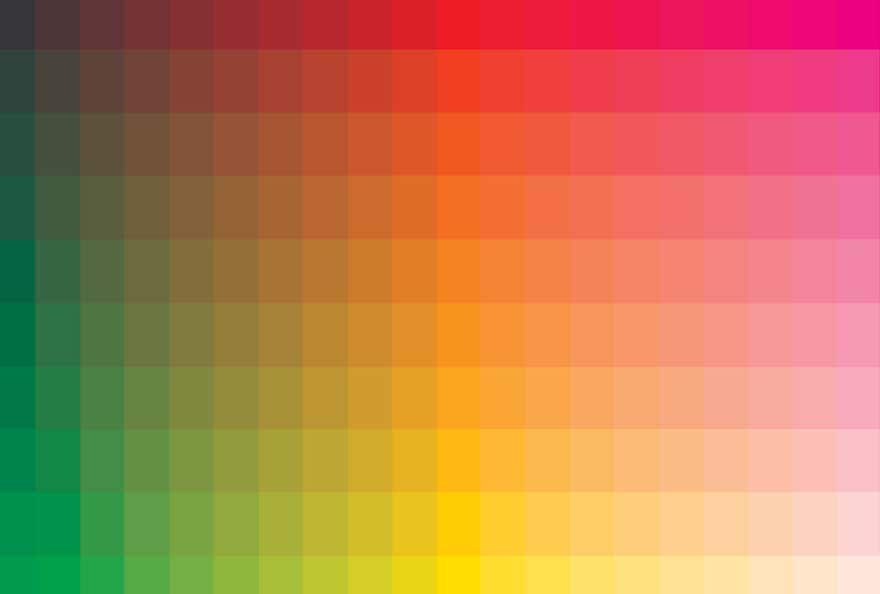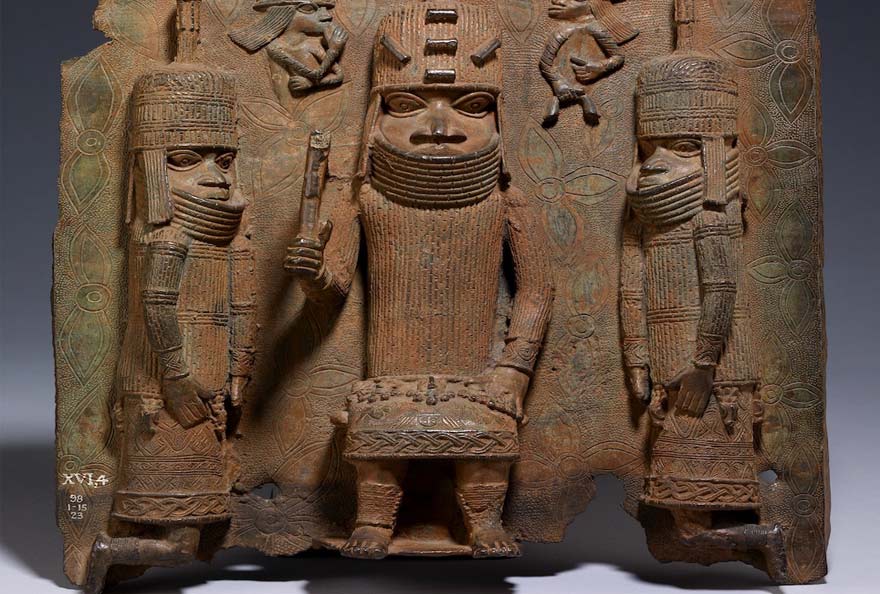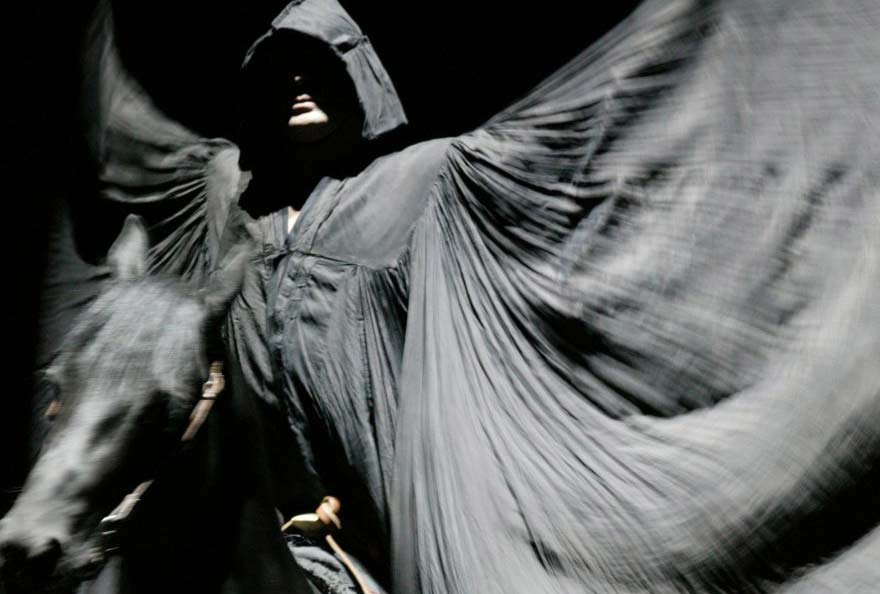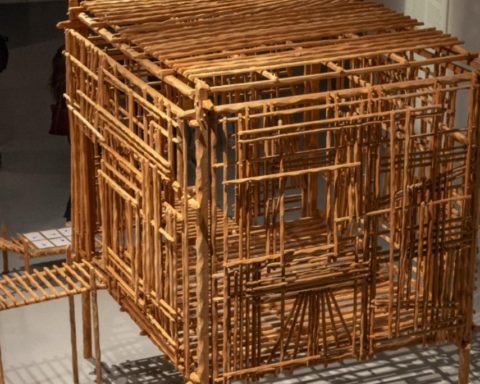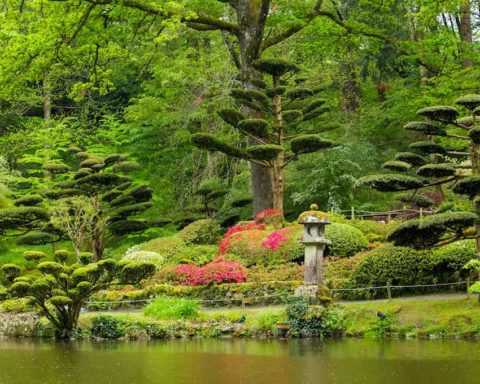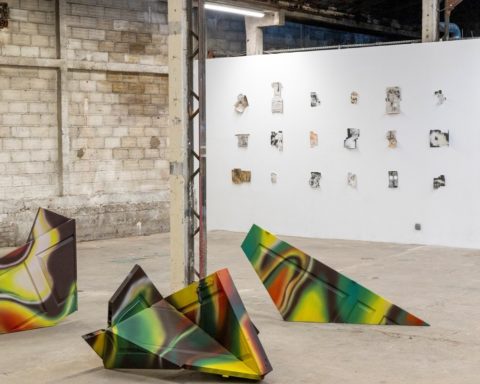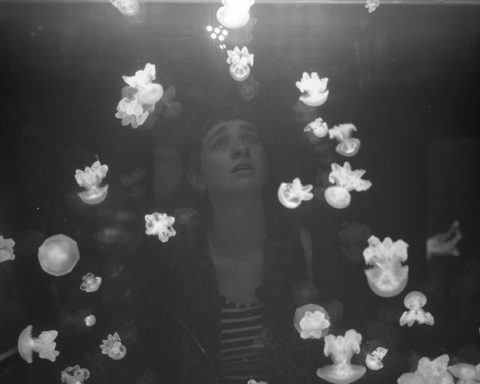For his first solo exhibition at the plateau and in an institution in Paris, Swiss artist Stéphane Dafflon revisits the spaces on the plateau for an architectural as well as pictorial intervention, generating a whole series of new works, paintings, sculptures and wall stickers. In his field of abstraction, this intervention and these works tend to modify our perception of reality.
Ahe wall adhesives in infinite colours and shades give the space a vibratory power, like a wave that resonates with the architecture of the place.
First created on the screen and then transposed from the computer to the canvas or the wall, Stéphane Dafflon's pictorial work is always thought out for a place, for a very precise architecture, in which it is inscribed and on which he will act to modify the perception that the spectator has of it, both visually and physically.
Through the long chromatic fade out that takes place through the wall installation proposed by Stéphane Dafflon, the space of the stage is as if set in motion and the sensations that the visitor experiences there testify to a certain kinship with the world of music.
Stéphane Dafflon's abstract works are not confined to the medium of painting alone, but have also been developing in recent years in the form of sculptures. The works he creates in three dimensions come in different materials such as wood, translucent Plexiglas or stainless steel. Painted or shimmering, these three-dimensional objects echo the shapes of the paintings hanging on the walls, provoking reflections and interactions with the surrounding context that open up the space to unexpected perspectives.
The spaces thus transformed initiate an uncomplexed visual rhythm (both inherited and detached from the pictorial theories of Max Bill in particular) mixing objects, paintings and adhesive drawing which dialogue with each other like so many multiple points of view whose carefully chosen and calibrated colours underline a graphic play with architecture.
Through these visual interweavings between painting, sculpture, object and architecture, Stéphane Dafflon's work proposes a point of view on abstract painting that is both original and radical, a painting that can be judged as enlarged, that invents itself outside the classical supports of canvas and stretcher to establish a spatial and colourful conversation that places the spectator at the centre of a real pictorial device.
A graduate of the ECAL/École cantonale d'art de Lausanne in 1999, where he has been teaching since 2001, Stéphane Dafflon lives and works in Geneva. He has presented monographic exhibitions at the Centre d'art de Fribourg, the MAMCO in Geneva, the FRAC Aquitaine in Bordeaux, the Institute of Contemporary Art in Copenhagen and the Villa Arson in Nice.
His works are present in many public collections, among which : Artothèque de Villeurbanne/Fonds National d'Art Contemporain - FNAC, Puteaux / FRAC Poitou-Charentes, Angoulême / FRAC Aquitaine, Bordeaux / frac île-de-france, Paris / FRAC Franche-Comté, Besançon / FRAC Pays de la Loire, Carquefou / Fonds cantonal d'art contemporain (FCAC), Geneva / Fonds d'art contemporain de la Ville de Genève (FMAC) / Musée cantonal des Beaux-Arts, Lausanne / Kunsthaus Collection, Aarau, Switzerland.
It is represented by the galleries: Air de Paris, Paris / Xippas, Geneva, Montevideo, Punta del Este (Uruguay) /Francesca Pia, Zürich / Parra Romero, Madrid.
www.fraciledefrance.com
The exhibition is supported by Pro Helvetia, Swiss Arts Council and the Fonds cantonal d'art contemporain, DIP, Geneva.
Stéphane Dafflon, Overview AST296, AST294, AST300, AST298, ASQT 299 - 2017 ©Stéphane Dafflon - Photo: Annick Wetter
Interview between Stéphane Dafflon and Xavier Franceschi (director of frac île-de-France and curator of the exhibition)
You know the Plateau well from having taken part in an exhibition - A Mural, Paintings in 2015 - for which you had carried out an intervention*, which already integrated all the spaces of the place. What were your first ideas when I suggested that you come back to the Plateau for a solo exhibition this time?
The fact of having used all the walls of the Plateau initially led me to think of an intervention that did not occupy any wall and was essentially spread out on the ceiling or on the floor. This proposal was quite stimulating and offered a different way of approaching my work. In the end, this project was materially very complicated to carry out, then after studying the current configuration of the place, it seemed more appropriate to return to a mural proposal.
* For Un mural, des tableaux, Stéphane Dafflon had been invited to present PM062, a piece recently acquired by the frac Ile-de-france.
It is essentially a mural proposal, but one that has been put together taking into account the whole space of the Plateau and its architectural dimension... Do you always proceed in this way when you are invited to make an exhibition, that is to say, necessarily consider your pictorial practice in relation to the architecture in which it will be able to unfold?
Most often, it all depends on the place and the possibilities to intervene on its architecture. And indeed, I think of painting in an "installed" environment. When I conceptualize a piece, its hanging and the environment in which it will be presented are equally important. The time of the exhibitions allows me to develop new series linked to specific places and moments. It is a way of updating my research.
For the moment, you started from the reality of the place, I would even say from the inventory of fixtures: the one you were able to make as a follow-up to the previous exhibition, that of Pierre Paulin. Can you tell us about the interventions, the modifications you made?
I kept part of the configuration that Pierre had set up, in the idea of a before and after. My intention was to transform the way in which the rooms followed one another, the spectator's wandering and the relationship between the works. The opening in the central wall allowed me both to keep the existing wall, but also to apprehend from this point, the beginning and the end of the exhibition.
This gesture defined the development of this exhibition. It was completed by a corner hanging of the pieces, thus interweaving the different rooms of the exhibition, a certain form of Tetris. The walls in front of the windows were removed to reintroduce daylight into the space and make it dialogue with the outside.
Do you consider this panoramic opening in the central wall as a sculpture in its own right?
For me it's a sculpture, but integrated directly into the architecture.
So you also very quickly thought of a set of murals that would marry some walls in "all-over". These murals are actually printed adhesives glued to the wall. First of all, how did you design the motifs for these pieces?
Following the architectural modifications, I defined several colour charts that I wanted to use for the shades of the pieces that would be displayed in the exhibition. It seemed important to me that this step should also be visible.
These large adhesives therefore play the same role as the murals, as you have done so far. However, between real painting and mechanical production, what difference do you see?
It is a technique I have used for murals, but for the first time in "all-over". The adhesive is perhaps closer to the wallpaper technique, but it is especially close to the computer tool I initially worked on: And there was not that moment when I had to interpret the shades I have on the screen in the preparation of my colours. I also use it when the realization time is very short. The number of tints led me to simplify the method of realization. The adhesive is also a way to get rid of some subjectivity and to take a little distance with the colours.
One of the characteristics of your work is indeed to design your parts systematically on computer before their realization. Would you say that this is what distinguishes you from your glorious elders, some of the minimalist and geometric abstract painters who preceded you? Where do you stand in relation to them?
In a continuity, I try to adapt this research to current concerns, to my daily life, and maybe going through a screen is part of it.
There is an alternation between these murals and paintings on canvas, all new and produced for the occasion. How did you want to play on both "paintings"? How did you determine the motifs of these paintings?
These are the divisions of a rectangle that I made in order to get closer to the grid of the colour chart of the wall adhesives. Each painting is a possible simplification of this very division. As for the tints, I calibrated them from a print of the adhesives, which generated a filter on all the tints in the exhibition.
Surprisingly, with this system that I thought was less subjective, I get compositions that refer much more to existing motifs.
For a while there was talk of presenting only murals made of adhesive, which would have meant that no real painting would have been present...
I had this desire at the beginning, to opt for a more industrial technique. It seems to me that it is also a way of painting but without the gesture.
Beyond the rational construction of your pieces - murals and paintings - is there for you a desire to destabilize or at least disturb the visitor's perception, as was the case in some of your previous exhibitions? I have the impression, as we're doing this interview before the exhibition is set up, that this will be more of a game of vibrations, a more stable multicoloured proposal in a way...
It's actually more stable because there's no strong contrast. It is the link between the succession and the crossing of the works and the rooms that will produce a play on perception, not the works in themselves.
We have often spoken of a sort of junction between art and the field of design in connection with your interventions, with the idea that if there was any use value, it was perhaps precisely in this way of guiding the visitor along a given path. How do you react to this?
I don't know if I want to guide him, I think I'd rather give impressions, free to him to take them. There are different levels of reading possible. As far as design is concerned, I think that this discipline has provided me with techniques, tools, models, but above all with effective solutions to real life forms.
When we say "vibration", we can legitimately evoke the field of music and sound. You have
regularly makes this parallel about your work. Could it still be the case with this proposal?
Rather than vibration, I prefer the idea of a rhythm, a visual sound. Being essentially pieces hung in the corners, they can make one think of a wave of echoes from one angle to another.
We talked about sculpture and in fact you propose some new ones, directly related to the paintings in the exhibition. Can you tell us what their conception was?
They are elementary sculptures, composed of tubular frames with a simple geometric shape, assembled by magnets. They are present to complete the subject, to accentuate certain links between the canvases and the adhesives, and also in reference to paintings that I may have done before.
It's funny, because this game of deconstruction/reconstruction that you like to play regularly in your works takes on another dimension here... To come back to this work between space and coloured perception, there is a piece that fully participates in this singular relationship but in another way, through the intervention of light. Can you tell us a few words about it?
I was looking for a transition between the main room and the last one, which follows a small corridor, a little dark. It is a new room, composed of a light bulb that randomly reproduces a light spectrum. It will be visible from outside the room, through an opening in the wall. Another way of replaying this colour chart.
We also talked about replaying a piece you had presented, this time disrupting the existing light device...
It's a piece I like because it's very simple in itself. It's a 2004 V001 that was first presented at the Spot. It's a neon light that flashes randomly using a dimmer and reproduces the moment when it needs to be changed.
I am interested in the questioning that such a play can provoke.
If the titles of your works always have a rational explanation (AST075 for 75e acrylic on canvas, PM031 for 31e mural, etc.), the title of the exhibition - U+25A6 - has a more mysterious origin. Can you tell us more about it?
I wanted an abstract title but related to the exhibition. This comes from the Unicode language, which is a computer standard that allows the exchange of texts in different languages. In this code, U+25A6 corresponds to a geometrical shape, the square with perpendicular hatching, referring to the grid for me.
Beyond these tools, it has been said that your art is the expression of an electronic and digital world. What do you think about that?
Indeed at one time, perhaps a little less so today. The speed of evolution of this world is not really in adequacy with my search for a painter who, nevertheless, remains very slow. What is certain is that it has influenced the elaboration and the succession of my pieces as well as the whole of my work.
But this is only a tiny part of this world.
What does this have to do with the notion of decor?
No pejorative notion in any case, and it is difficult for me to escape from it when my primary intention in developing this project was to produce a spatial immersion effect among visitors.
Interview by Xavier Franceschi, Director of the frac île-de-France and Commissioner of the exhibition
Stéphane Dafflon exhibition at the plateau, from February 1st to April 15th 2018 - 22 rue des Alouettes, 75019 Paris (Metro access: Jourdain or Buttes-Chaumont / Bus: line 26)
Exhibition open from Wednesday to Sunday from 14h00 to 19h00
Nocturne every 1st Wednesday of the month, Plateau-Apéro
Free admission
Photo: Work by Stéphane Dafflon, AM012-AM013, 2017 © courtesy of Stéphane Dafflon and Air de Paris, Paris

